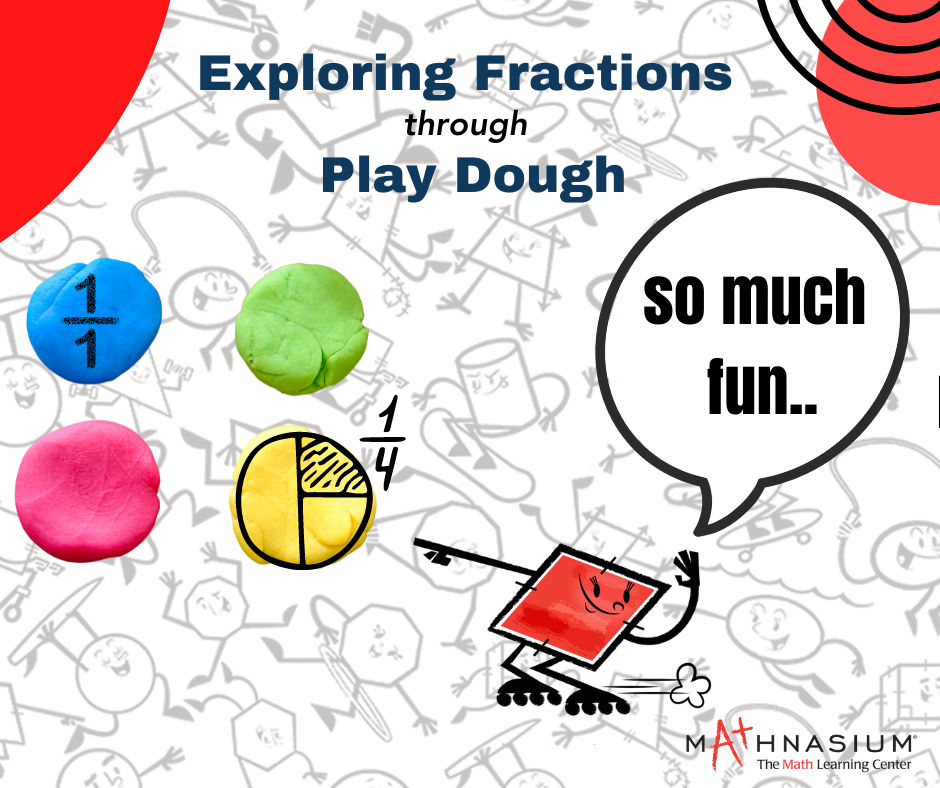Clermont
1675 Hancock Road
, #500
Clermont, FL 34711
Clermont, FL 34711
 (352) 988-2939
(352) 988-2939 (352) 988-2939
(352) 988-2939 [email protected]
[email protected]

Learning fractions can be a challenging task for many kids, but it doesn't have to be dull and abstract. Engaging in hands-on activities can make the concept more concrete and enjoyable. One such creative project involves using play dough to teach fractions. This approach not only adds an element of fun but also allows students to visualize and manipulate fractions tangibly.
The Play Dough Fraction Project: The Play-Dough Fraction Project is a hands-on and interactive way to introduce and reinforce the concept of fractions. It's suitable for various age groups and can be adapted to different skill levels. The project involves creating different fractional parts using play dough, helping students develop a deeper understanding of fractions through tactile exploration.
Materials Needed: Play dough in different colors Plastic knives or play dough tools Rulers or measuring tapes Small containers or cups
Instructions: Introduction to Fractions: Begin by introducing the concept of fractions to the kids. Explain that fractions represent parts of a whole and can be expressed as a numerator over a denominator. Use simple examples to illustrate the concept, such as dividing a pizza into equal slices.
Creating the Whole: Provide a kid with a lump of play dough representing a whole. This can be a large ball or a flat surface. The whole will serve as the foundation for exploring various fractions.
Dividing into Halves: Instruct the kid to use plastic knives or play dough tools to divide their whole into two equal parts, representing halves. Encourage them to observe how the size of each half compares to the original whole.
Exploring Thirds: Next, guide the kid to divide their play dough into three equal parts, representing thirds. Discuss how each third relates to the whole and how three-thirds make up the entire play dough.
Quartering the Dough: Extend the project by having kids divide their play dough into four equal parts, representing quarters. Discuss how each quarter relates to the whole and how four quarters make up the complete unit.
Measuring and Comparing: Introduce measurement tools like rulers or measuring tapes to help kids quantify the size of each fraction. This step allows for a more mathematical understanding of fractions.
Example Scenario: Imagine a scenario where a kid starts with a red play dough ball as the whole. They divide it into two equal parts to represent halves. One half is red, and the other is yellow. Then, they further divide the yellow half into three equal parts to represent thirds. Finally, they divide the red half into four equal parts to represent quarters.
The Play-Dough Fraction Project is a delightful way to make fractions more accessible and enjoyable for kids. By combining hands-on activities with visual and tactile elements, this project fosters a deeper understanding of fractions and lays the groundwork for more advanced mathematical concepts. As kids mold and manipulate play dough, they're not just learning fractions; they're experiencing them memorably and engagingly.
